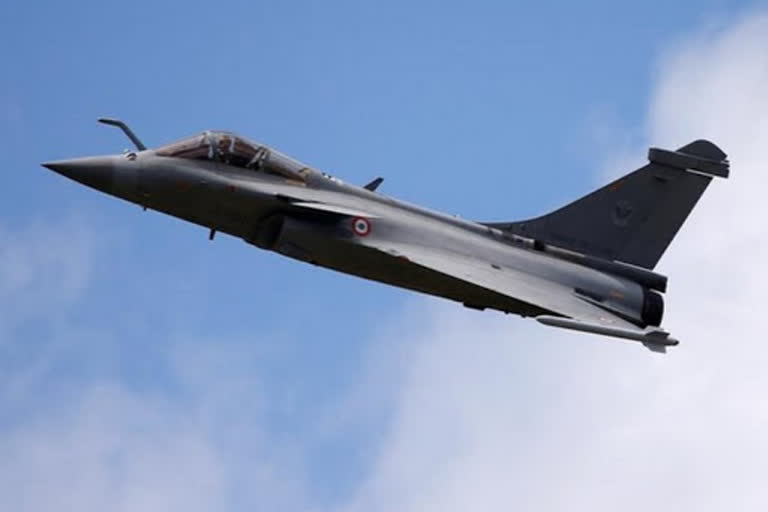New Delhi: There is sure to be a buzz during the two-day Air Force Commanders' conference in the national capital that begins on Wednesday (July 22) with one of the focal areas of discussions being the much-anticipated touchdown of five Rafale fighters at the Ambala airbase sometime next week amid soaring tensions with China.
The five aircraft will come in such a condition that they will be able to take to the skies for IAF sorties very soon.
"These Rafale fighters have quite a few India-specific enhancements. Most of these have already been fitted in during the manufacturing stage itself while some minor fitments will happen in India. But they will all fly down in a 'plug and play' condition and will be able to undertake sorties as soon as possible," said a military source familiar with the development.
Another source that ETV Bharat spoke to said that the fully-loaded Rafale fighters can be deployed for their mandated roles within a few weeks time.
The capability to be rapidly deployed is notable amid India’s escalating military tension with China even as the two Asian giants have substantially mobilized men and material positioned in areas along the Line of Actual Control (LAC), the de facto India-China border.
Read: Top IAF brass to meet to discuss China border situation, rapid Rafale deployment this week
India has already deployed its frontline fighter aircraft like Su-30, Mirage 2000, and Mig 29 besides attack and heavy-lift helicopters for operational roles along its northern borders.
On the other hand, the People's Liberation Army Air Force (PLAAF), besides fielding an array of medium and long-endurance drones, has deployed J-16 and J-8 fighters, Y-8 transporters, KJ-500 airborne early warning and control aircraft besides helicopters especially Mi-17.
India is procuring 36 Rafale fighters from the Dassault Aviation factory in Bordeaux in southwestern France. India will be the fourth country to operate Rafales after France, Qatar and Egypt.
The IAF will headquarter the two Rafale squadrons in Ambala and in Hashimara in West Bengal.
Among the likely enhancements that may be incorporated include capability to carry nuclear payloads.
The key India-specific enhancements include a NAVIC-supported real-time positioning system. NAVIC (Navigation with Indian Constellation) is India's indigenous version of the GPS comprising a constellation of seven satellites.
Read: WATCH: Air Commodore Surendra Singh Tyagi on Rafale fighter jet
The Rafale is also being fitted with a modified M88-4E aero engine which will enable the fighter to operate optimally even in the oxygen-depleted very high altitude air bases like Leh.
Other enhancements include an advanced airborne weather radar system, a collision avoidance system including a Terrain Avoidance Warning System (TAWS), standby electronic systems, decoy capabilities, helmet mounted displays and fitment to integrate the Israeli 'Spice' missile, besides modifications to integrate the Beyond Visual Range Air to Air Missile (BVRAAM) 'Meteor' and the home-made 'Astra' missile.



